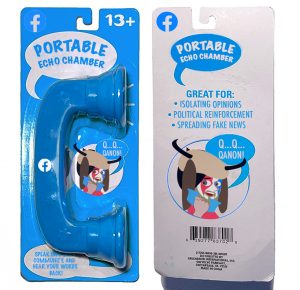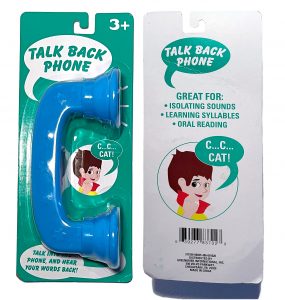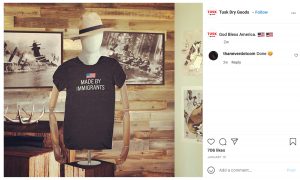Here’s how one artist and professor teaches her students to leverage their fair use rights.
Culture jamming.
Rebekah Modrak is a visual artist whose work (http://rebekahmodrak.com/) critiquing and exploring the contradictions of

This is art.
today’s commercial culture routinely leverages the copyright doctrine of fair use—the right to employ other people’s copyrighted materials under some circumstances. If you’re puzzled about why there’s a plunger in this blog post, you can find out here. It’s art—and fair use.
Modrak was one of the many professionals in the visual arts community who, through the College Art Association, created the Code of Best Practices in Fair Use for the Visual Arts.
Creativity and commerce.
In University of Michigan’s Stamps School of Art & Design, students in Modrak’s course, Interventions in Commerce (“a forum for acts of culture jamming encouraging creative expression and critique in the realm of commerce”), learn about fair use. Why?
“So they can use art to challenge the boundaries of the persuasion industry,” Modrak explained. “Students begin to see the realm of commerce not as a fixed field but as a space of malleable signs and symbols for their own commentary.”
Students need fair use for guerilla art, billboard banditry, and subtervising (subverting advertising). The students use the visual arts best practices code to articulate their new purposes and to justify the amount of copyrighted material they use.
Here are three examples of their work:
 Grace Klein recreated Bernie Sanders’ appearance on the Late Show, where he was treated like a celebrity, in cardboard, a humble material used in daily worklife, to re-imagine him as an anti-celebrity.
Grace Klein recreated Bernie Sanders’ appearance on the Late Show, where he was treated like a celebrity, in cardboard, a humble material used in daily worklife, to re-imagine him as an anti-celebrity.
 Anders Lundin transformed theTalk Back Phone toy into a Portable Echo
Anders Lundin transformed theTalk Back Phone toy into a Portable Echo  Chamber, to make a comment on the social and political moment. The child’s toy turned into a “portable echo chamber.”
Chamber, to make a comment on the social and political moment. The child’s toy turned into a “portable echo chamber.”
Jay Campbell took a presentation by UX Designer Aaron Irizarry, which he analyzed as sharing “the aesthetics popular in  menswear boutiques: the repackaging of masculine clichés (symbols of the log cabin, the American flag, and imagery of war) for contemporary sensibilities…but stopping far short of actually interrogating what makes traditional masculinity clichés so problematic in the first place. I recreated Irizarry’s Zoom presentation as an Instagram post by a fictional Menswear boutique.” He built his recreation from retail wholesale supplier websites and menswear boutiques.
menswear boutiques: the repackaging of masculine clichés (symbols of the log cabin, the American flag, and imagery of war) for contemporary sensibilities…but stopping far short of actually interrogating what makes traditional masculinity clichés so problematic in the first place. I recreated Irizarry’s Zoom presentation as an Instagram post by a fictional Menswear boutique.” He built his recreation from retail wholesale supplier websites and menswear boutiques.
Happy Fair Use Week!
